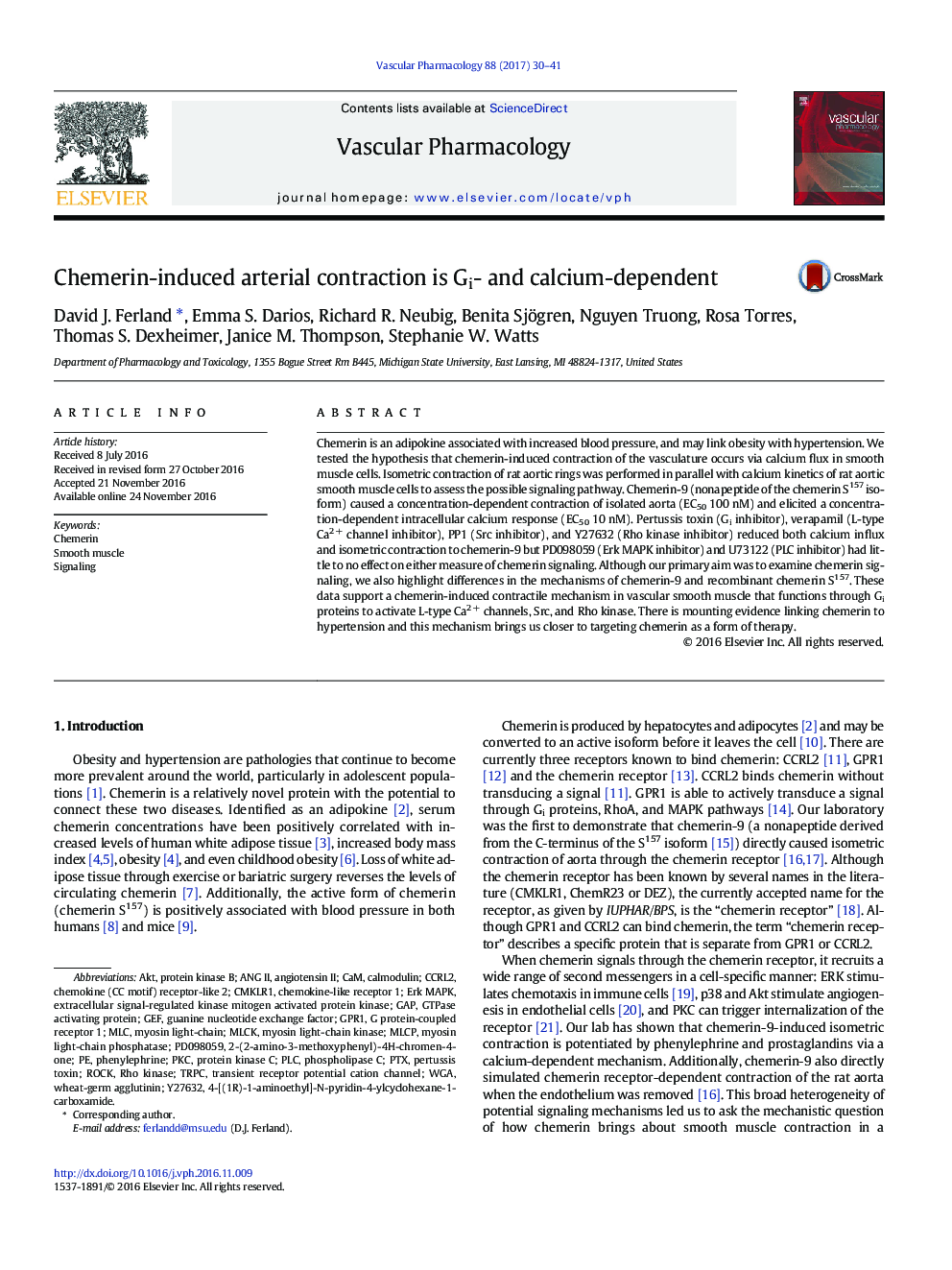| Article ID | Journal | Published Year | Pages | File Type |
|---|---|---|---|---|
| 5558951 | Vascular Pharmacology | 2017 | 12 Pages |
Chemerin is an adipokine associated with increased blood pressure, and may link obesity with hypertension. We tested the hypothesis that chemerin-induced contraction of the vasculature occurs via calcium flux in smooth muscle cells. Isometric contraction of rat aortic rings was performed in parallel with calcium kinetics of rat aortic smooth muscle cells to assess the possible signaling pathway. Chemerin-9 (nonapeptide of the chemerin S157 isoform) caused a concentration-dependent contraction of isolated aorta (EC50 100Â nM) and elicited a concentration-dependent intracellular calcium response (EC50 10Â nM). Pertussis toxin (Gi inhibitor), verapamil (L-type Ca2Â + channel inhibitor), PP1 (Src inhibitor), and Y27632 (Rho kinase inhibitor) reduced both calcium influx and isometric contraction to chemerin-9 but PD098059 (Erk MAPK inhibitor) and U73122 (PLC inhibitor) had little to no effect on either measure of chemerin signaling. Although our primary aim was to examine chemerin signaling, we also highlight differences in the mechanisms of chemerin-9 and recombinant chemerin S157. These data support a chemerin-induced contractile mechanism in vascular smooth muscle that functions through Gi proteins to activate L-type Ca2Â + channels, Src, and Rho kinase. There is mounting evidence linking chemerin to hypertension and this mechanism brings us closer to targeting chemerin as a form of therapy.
Graphical abstractDownload high-res image (59KB)Download full-size image
